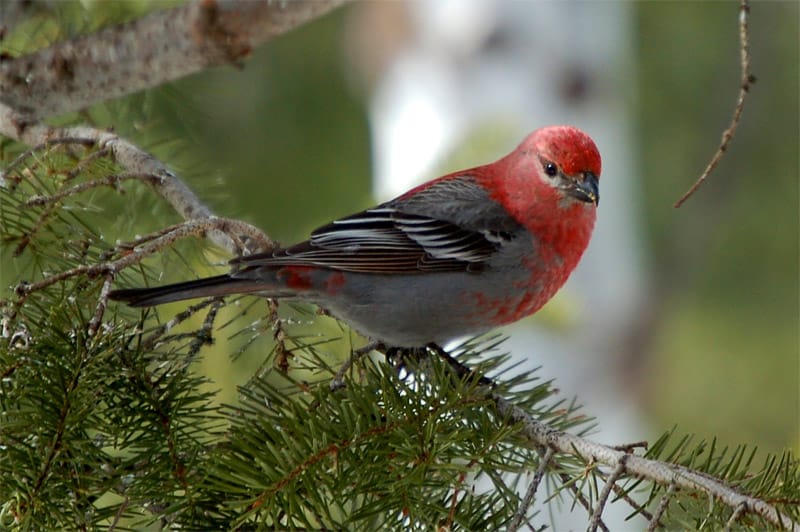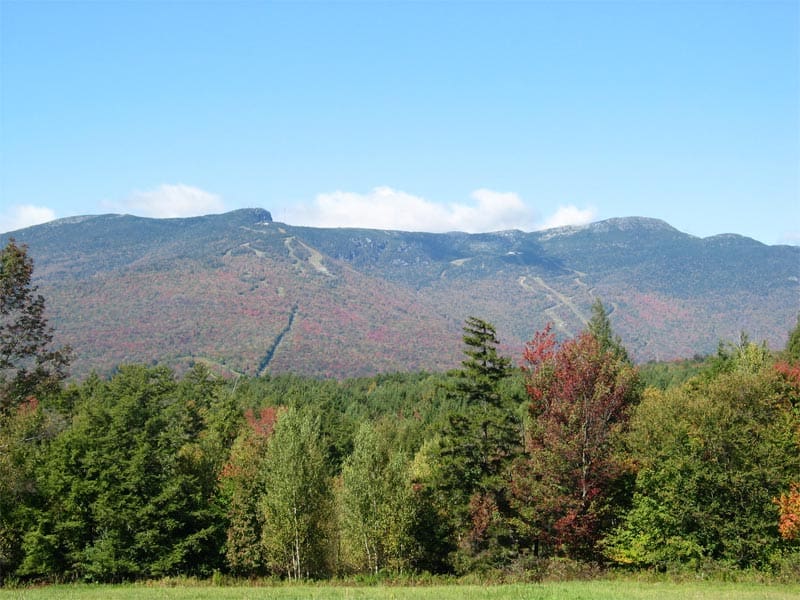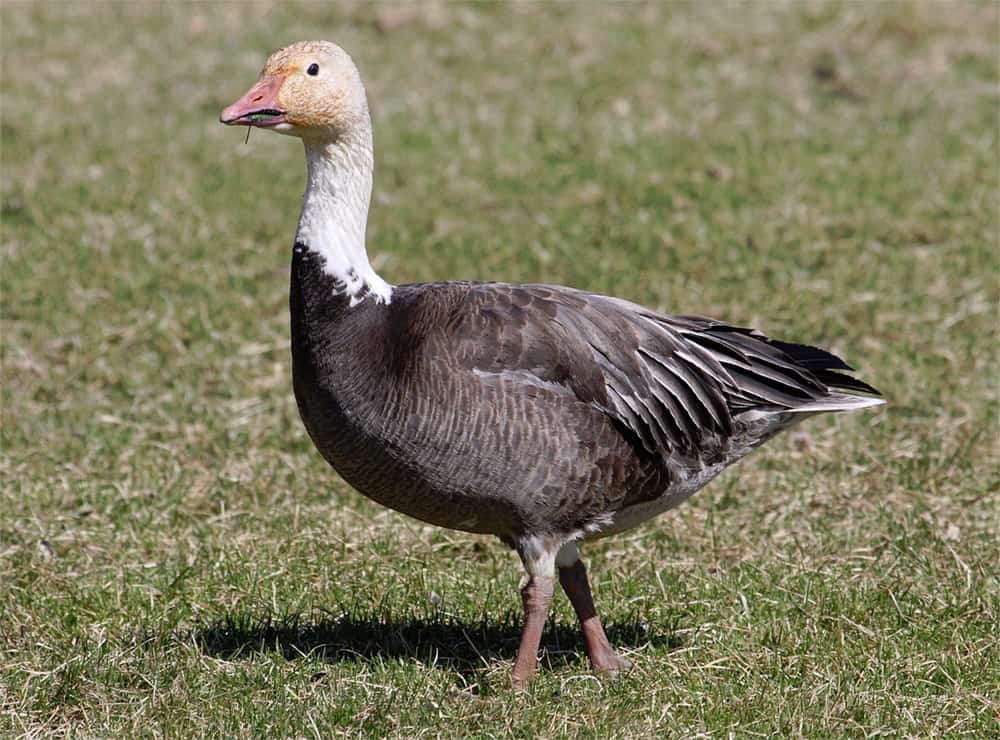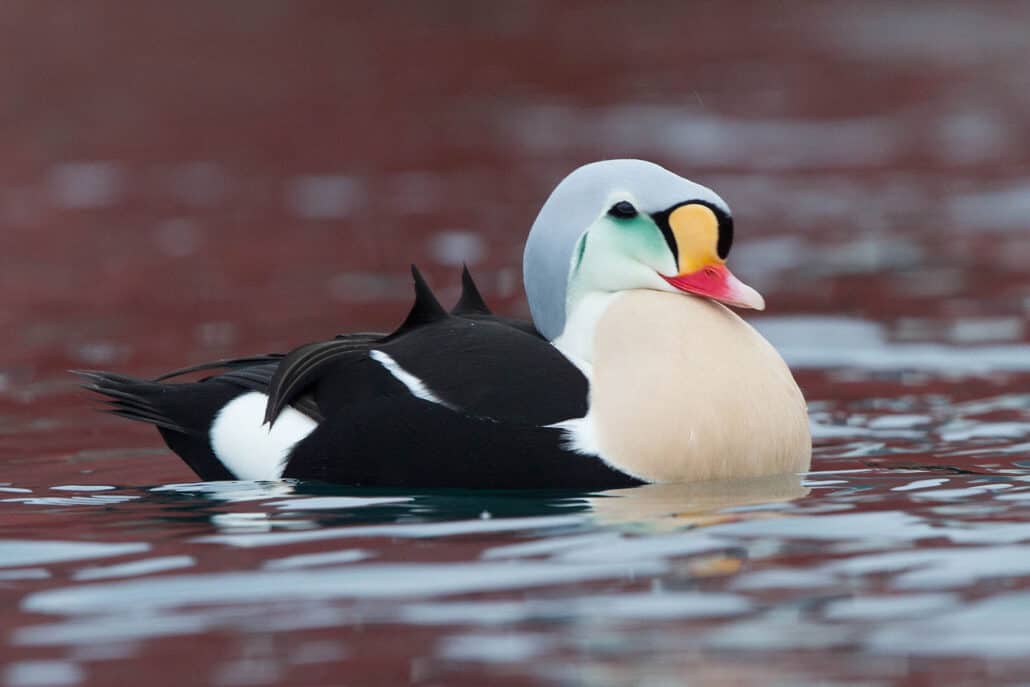Birding in the Adirondack Mountains of northern New York during bug season offers birders a bit of a conundrum. On one hand, during spring, the forest transforms from silent white to bustling green (with a long period of mud in between), and migrants return to take advantage of the habitats that have opened and the plethora of available insect food. On the other hand, you have to hope you don’t go mad with blood loss as you contend with the insects yourself. But the birds eat the insects that have been feasting upon you. So, if you come to the Adirondacks during bug season, rather than complain about the insects, be grateful they permit you to take part in the circle of life. Just think—your blood can help nourish a warbler chick!
Sitting in the northeast corner of the more than six-million-acre Adirondack Park, the Olympic Region (so named because the Village of Lake Placid hosted the winter Olympics in both 1932 and 1980) offers great birding opportunities. It is a popular tourist destination and many visitors come throughout the year in search of quiet solitude, refreshing lakes, or refreshing snowy powder.
Although breeding season offers birders a much higher diversity than the rest of the year, a few of the noteworthy Adirondack specialties are year-round residents. The Adirondacks are one of the closest places in the northeastern United States to see species such as black-backed woodpecker, boreal chickadee, and gray jay. Other boreal species, such as red and white-winged crossbills, are less consistently found and vary greatly according to food supplies from year to year.
Another year-round boreal resident is the spruce grouse, but this state-listed endangered species exists only in small isolated populations within the park.
All of these species are found only in the pockets of coniferous boreal habitat scattered in bogs and along waterways across the Adirondacks, fragments of an ecosystem that covers much of Canada. Many of these coniferous habitats are part of larger ecosystem mosaics—complex systems where boreal habitat meets deciduous forest or alder-choked streams. The result can be a remarkable diversity of birds, most notably the rainbow of warblers that breeds across the area.
One such boreal locale in the Olympic Region is Bloomingdale Bog. This bog is accessed from a railroad bed, turned into a walking and biking trail. Its southern access starts just a few miles north of the Village of Saranac Lake. From here, the path skirts a small beaver marsh, which can offer not only wetland birds like hooded merganser and American bittern and aquatic mammals such as river otters, but can also be a great area to find a mix of dispersing warblers and other songbirds during late summer and fall migration.
The north end of the trail is accessed from Route 55 west of Bloomingdale and drops birders directly into the bog as they walk south from the parking area. Nashville and magnolia warblers sing everywhere, and palm warblers hypnotize birders with their rhythmic butt and tail bobbing as they search for insects. Lincoln’s sparrows sing from low perches and yellow-bellied flycatchers call from the coniferous forest near their nests in the sphagnum moss. This stretch of trail is also phenomenal for gray jays, which often follow hikers down the trail and have even landed on my head, excited by the prospect of an imaginary handout.
About a half-mile walk north from the northern access to the bog brings birders to a potholed dirt road (Bigelow Road) that is also quite good for boreal birds and breeding warblers, although the road can be unsightly in a few spots thanks to illegal dumping. The eastern end of Bigelow links with Oregon Plains Road—another good boreal location, although birders who go there should be mindful of fast-moving cars on the generally quiet road.
Another location with nice boreal habitat sits just north of the hamlet of Paul Smith’s on Route 30. The Paul Smith’s College Visitor Interpretive Center offers a great network of walking trails and wetlands. The Boreal Life Trail here takes birders on a short loop trail along a boardwalk through some splendid bog habitat, where palm warblers and other warbler species abound and where the resident boreal species are all possible. The Heron Marsh Loop on the property is also great for American bittern, ring-necked duck, Virginia rail, and wood duck.
Farther north sits Madawaska Bog and its complex of surrounding forests, an excellent place not only for boreal species, but also for many warblers and other songbirds. It may be the best birding location in the entire park. Although warblers are common breeders across the Adirondacks and the Olympic Region, Madawaska’s diverse habitats provide visitors with an array of species from mourning warbler to northern parula. Many species—including Canada and northern waterthrushes—are found along Blue Mountain Road on the long, windy drive into the area. This road should be walked and explored; it is seldom traveled.
In addition, nighttime birding in Madawaska and along Blue Mountain Road can be great, particularly in spring when saw-whet and barred owls fill the air with toots and quacks and in late spring when common nighthawks buzz near Indian Rock. Just be prepared for enthusiastic mosquitoes the size of miniature ponies. On some days, you’ll swear you could ride them to Madawaska Pond, which is a good place to look for breeding Lincoln’s sparrow, swamp sparrow, common loon, ring-necked duck, and American bittern, among others. Ruddy ducks have even been confirmed breeders in recent years, and the collection of boreal habitats and dead snags near the pond can be good for the likes of black-backed woodpecker and olive-sided flycatcher.
No trip to the Olympic Region would be complete without a morning on Whiteface Mountain (site of the Olympic alpine skiing events), and no birder’s trip to the area would be complete without attempting to see Bicknell’s thrush. Whiteface is perhaps the easiest place to find Bicknell’s, because a road winds its way to the top. Numerous pull-offs along the road allow access to a variety of habitats and their accompanying bird communities, starting with mixed-deciduous forest at the Whiteface gatehouse and ending at low brushy spruce-fir forest (called krummholz) at the summit. Overall species diversity decreases with increasing altitude, but birders must go high on Adirondack mountains to see Bicknell’s. Swainson’s thrushes are present even down at the gatehouse and along the way up, but the lower limit for Bicknell’s is around 3,200 to 3,300 feet.
Any thrushes seen along the road should be carefully checked, because both Swainson’s and Bicknell’s perch on the rocks that line the road and can be seen along the edges of the woods. It is wise to stop at pull-offs above 3,000 feet (there are signs posting elevation along the road) and walk the road to search for the thrushes, listening for the Bicknells’ sharp veer call. Some specific places to spend time in search of Bicknell’s are the Lake Placid and Wilmington curves—both of which are labeled with signs. These sites also have the added bonus of offering beautiful views, and birders can look for other birds in the area, including ruby-crowned kinglets, winter wren, common raven, and yellow-rumped and blackpoll warblers. The top of the mountain also gives great views of the Adirondacks, and you can even see the Montreal skyline.
The intrepid birder on a Bicknell’s quest might choose to hike Whiteface Mountain instead of drive. This offers the advantage of being able to be in Bicknell’s habitat early in the morning (the auto road doesn’t open until 9 a.m.). Bicknell’s has the reputation of singing from 4:30 to approximately 4:35 a.m., so this can offer a considerable advantage. That said, I’ve had Bicknell’s singing throughout the day and have seen them along the auto road around noon.
The High Peaks Wilderness Area, located just south of Lake Placid and Saranac Lake, offers endless places to explore and bird. Peaks and hikes of varying heights and difficulties cover the map, and the spruce-fir forests near their summits harbor Bicknell’s thrush. Most such summits are a long hike from any access point, but Cascade and Porter mountains off of Route 73 toward the village of Keene present the shortest hikes. High elevations also hostboreal chickadee, yellow-bellied flycatcher, and in the right years, white-winged crossbill. Warblers, including the high-elevation-breeding blackpoll warbler, abound throughout the area, as do hikers on popular summits and warm summer weekends.
One final place to check out in the region is the Intervale Lowlands, a privately owned parcel on the outskirts of Lake Placid not far from the Olympic ski jumps (see http://intervalelowlands.org/). For its size, Intervale offers an array of habitats with patches of boreal forest, interspersed with brushy open areas along the snaky path of the AuSable River. Intervale is a great place to find mourning warbler, and Cape May warbler has bred on the property the past few summers. Brushy habitats also contain brown thrasher, alder flycatcher, and yellow and chestnut-sided warblers, among many others. At this writing, the property boasts a list of over 160 species and climbing in only four years of ownership. The array of bird feeders (including feeding stations for the diversity of mammals present) will make any birder envious, and the species drawn in for such bounty make a winter visit worthwhile, as well. It is then that northern shrikes can be found hunting along the bushes and hundreds of common and hoary redpolls twitter this snowy, sleepy world to life. They are reminders that even when spring lies dormant beneath two feet of snow, it will come eventually—insects and all.




